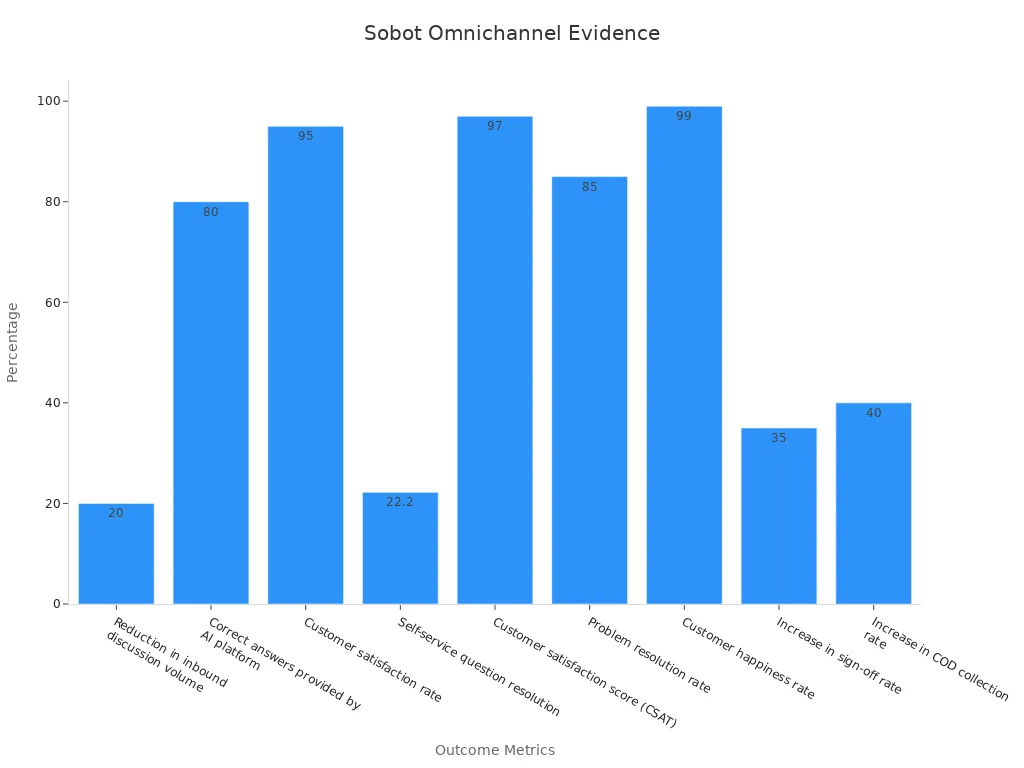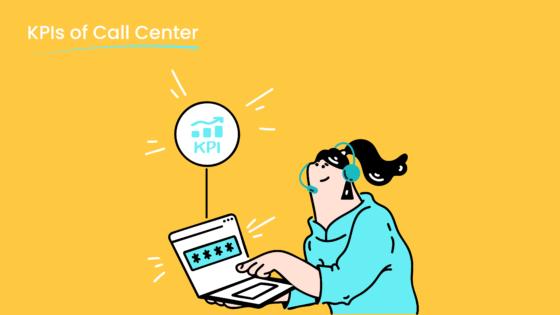How to Foster Collaboration in Customer Service Teams

When your customer service teamwork collaborates effectively, magic happens. You’ll see faster problem-solving, happier customers, and a team that feels more connected. Did you know employees working in teams can boost customer engagement by 7% and deliver 19% higher sales? That’s the power of teamwork. Collaboration also helps retain talent—effective communication increases retention rates by 4.5 times. Tools like Sobot make this easier by unifying workflows, so your team can focus on what matters most: delivering outstanding customer experiences. A well-connected team isn't just efficient; it’s your secret weapon for long-term success.
Understanding Customer Service Collaboration
What is Customer Service Collaboration?
Customer service collaboration happens when team members work together to solve customer issues, share knowledge, and create a seamless experience. It’s not just about answering questions—it’s about teamwork that ensures every customer feels valued.
Here’s a quick breakdown to make it clearer:
| Definition | Example |
|---|---|
| Collaborative customer service is the practice of having many customer service team members work together to address customer inquiries, complaints, and issues. | Team members share information, coordinate efforts, and communicate to ensure that customers' needs are met in a timely and satisfactory manner. |
| Collaboration within a service team is crucial for providing exceptional customer service. | It allows team members to share information, knowledge, and resources with one another. |
| Exceptional customer service requires collaboration between all members of your business. | By working together, everyone can ensure that the customer experience is positive. |
Did you know that 70% of customers expect companies to collaborate on their behalf? That’s a big deal! When your team works as one, customers notice—and they appreciate it.
Why Collaboration is Key to Customer Service Teamwork
Collaboration isn’t just a buzzword; it’s the backbone of great customer service. When your team communicates effectively, they resolve cases faster and leave customers happier. It’s like a well-oiled machine—every part works together to deliver results.
Here’s why it matters:
- Faster resolutions mean fewer frustrated customers.
- Teamwork reduces burnout, keeping your agents motivated.
- Happy agents lead to better customer experiences.
Mastering customer service collaboration doesn’t just improve teamwork. It directly impacts customer satisfaction and loyalty. When your team collaborates, everyone wins—especially your customers.
Overcoming Common Barriers to Collaboration
Collaboration sounds great, but it’s not always easy. Teams often face challenges like trust issues, poor communication, or knowledge gaps. Let’s tackle these barriers head-on:
| Barrier | Description | Solution |
|---|---|---|
| Lack of Respect and Trust | Essential for successful collaboration; often lacking due to differences. | Foster increased interactions, especially in-person, to build trust and respect. |
| Poor Listening Skills | Key to good communication and collaboration. | Encourage active listening and engagement during collaboration sessions. |
| Knowledge Deficits | Impacts understanding and collaboration among team members. | Use collaborative tools like Google Workspace for real-time co-authoring and feedback. |
By addressing these issues, you can create a team that works together seamlessly. Tools like Sobot’s omnichannel solution can also help unify efforts, ensuring everyone stays on the same page. When barriers disappear, collaboration thrives.
Building a Foundation for Effective Team Training and Development
The Role of Team Training in Enhancing Collaboration
Team training and development are the backbone of collaboration. When your team receives effective team training, they learn how to work together seamlessly, share knowledge, and tackle challenges as a unit. Training isn’t just about teaching skills—it’s about building trust and fostering a culture of teamwork in customer service.
Here are some proven methods to enhance collaboration:
| Training Method | Description |
|---|---|
| Team Building Activities | Fun and creative ways to strengthen bonds, morale, and culture, improving teamwork and collaboration. |
| Open Communication | Utilizing tools for real-time communication enhances responsiveness and collaboration among teams. |
| Joint Training | Sessions where product managers train sales and support teams ensure everyone is informed. |
| Peer Coaching | Collaborative learning processes that build trust and accountability within the team. |
For example, organizing joint training sessions with product managers can ensure your sales and support teams stay aligned. Tools like Sobot’s Voice/Call Center make this even easier by providing a unified workspace for real-time communication and collaboration.
Developing Skills for Customer Service Teamwork
Great teamwork in customer service starts with skill-building. Your team needs more than technical knowledge—they need interpersonal skills, problem-solving abilities, and adaptability. Regular customer service training can help them stay sharp and ready for any challenge.
Here’s how you can develop these skills:
- Encourage peer-to-peer learning to foster collaboration and knowledge-sharing.
- Provide ongoing learning opportunities, like interactive workshops or role-playing exercises.
- Implement regular feedback systems to help your team grow and improve.
For instance, role-playing exercises can simulate real customer scenarios, helping your team practice empathy and quick decision-making. Sobot’s omnichannel solution supports this by offering a unified platform where agents can access customer data and collaborate effectively.
Leadership Training for Better Team Dynamics
Strong leadership is essential for team harmony. Leaders set the tone for collaboration and guide their teams toward success. Leadership training programs can help managers develop the skills they need to inspire and support their teams.
Effective programs focus on practical applications, like handling real-world scenarios and aligning leadership strategies with team challenges. Tailored curricula ensure leaders address specific dynamics within their teams. For example, Sobot’s analytics tools provide insights that help leaders optimize team configurations and improve service quality.
When leaders are equipped to foster collaboration, your team becomes more cohesive, motivated, and productive.
Encouraging Open Communication for Better Teamwork
Creating a Transparent and Inclusive Culture
Building a transparent and inclusive culture is the cornerstone of effective team collaboration. When your team feels valued and included, they’re more likely to share ideas, solve problems together, and deliver exceptional customer service. But how do you create this kind of environment?
Start by empowering your team. Give them the tools and autonomy to make decisions. Studies show that empowerment and team cohesion are critical for fostering a positive workplace. Employees thrive in inclusive environments where their voices are heard and appreciated.
Here’s what transparency can achieve:
- A positive organizational climate boosts employee engagement and commitment.
- Inclusive practices create equitable workplaces, reflecting servant leadership principles.
- Employees feel motivated when they work in a supportive and open culture.
Transparency also builds trust. Did you know that 35% of workers are more likely to trust their organization when they believe data is used responsibly? Trust leads to better collaboration, which directly impacts customer satisfaction.
Using Tools like Sobot's Voice/Call Center for Real-Time Communication

Clear communication is the backbone of any successful team. Without it, even the best strategies can fall apart. That’s where tools like Sobot’s Voice/Call Center come in. They simplify real-time communication, ensuring your team stays connected and aligned.
Sobot’s Voice/Call Center offers features like AI-powered sentiment analysis, which helps agents adjust their tone and approach based on customer emotions. This tool doesn’t just improve communication—it transforms it. For example:
| Metric Description | Impact |
|---|---|
| AI-driven coaching programs improve agent performance scores by up to 25% | Enhances agent effectiveness in real-time communication |
| AI systems reduce post-call work by 25% | Increases operational efficiency and allows agents to focus on calls |
| AI-powered sentiment analysis tools used in 65% of call centers | Helps adjust communication strategies based on real-time emotional cues |
Imagine your team handling calls with confidence, knowing they have the tools to understand and respond to customers effectively. With Sobot’s unified workspace, agents can access customer data instantly, making every interaction seamless. This level of clear communication not only improves teamwork but also elevates the customer experience.
Establishing Feedback Loops to Strengthen Collaboration
Feedback is the glue that holds team collaboration together. Regular feedback loops ensure your team knows what’s working and what needs improvement. It’s not just about pointing out mistakes—it’s about fostering growth and building stronger connections.
Consider this: A Fortune 500 tech company saw a 30% rise in employee performance and a 22% increase in engagement after implementing real-time feedback systems. They also reduced turnover by 15%. Feedback isn’t just a tool; it’s a game-changer.
Here’s how you can establish effective feedback loops:
- Schedule regular one-on-one check-ins to discuss performance and goals.
- Use tools like Sobot’s analytics to track team performance and identify areas for improvement.
- Encourage peer-to-peer feedback to build trust and accountability.
For example, a mid-sized retail chain improved its customer satisfaction scores by 40% and boosted its net promoter score from 25 to 60 by incorporating real-time feedback from employees and customers. When feedback becomes a two-way street, your team feels heard, valued, and motivated to collaborate better.
Leveraging Technology to Enhance Customer Service Collaboration

How Sobot's Omnichannel Solution Unifies Team Efforts
When your customer support team works across multiple channels, things can get messy. Disjointed systems lead to miscommunication, slower resolutions, and frustrated customers. That’s where Sobot's Omnichannel Solution steps in to save the day. It brings all your communication channels—email, chat, social media, and voice—into one unified platform. This integration ensures your team has everything they need in one place, making collaboration smoother than ever.
For example, a major fresh food e-commerce company used Sobot's Omnichannel tools to tackle fragmented systems. The result? Better teamwork and faster responses. By syncing customer data across channels, Sobot helps your team access the right information at the right time.
Here’s what the numbers say:
| Metric | Value |
|---|---|
| Increase in Agent Efficiency | 30% |
| Customer Satisfaction (CSAT) | 97% |
With Sobot, your team doesn’t just work harder—they work smarter. Agents can instantly pull up customer histories, coordinate with teammates, and resolve issues faster. This unified approach doesn’t just improve customer service; it transforms it into a seamless experience for everyone involved.

Using Shared Knowledge Bases for Seamless Information Access
Imagine this: A customer asks a tricky question, and your agent has no idea where to find the answer. Frustrating, right? Shared knowledge bases solve this problem by acting as a central hub for all your team’s information.
With Sobot, you can create a knowledge base that’s accessible to everyone on your customer support team. Whether it’s technical documentation, FAQs, or sales data, your team can find what they need in seconds.
Here’s how shared knowledge bases make life easier:
- A technical documentation database helps agents respond to complex queries quickly.
- FAQ sections let customers find answers on their own, reducing the workload for your team.
- Sales-related knowledge bases keep your team updated on customer profiles and preferences.
These resources don’t just save time—they also improve customer service by ensuring consistent and accurate responses. Plus, SaaS-based knowledge bases like Sobot’s are accessible from anywhere, making remote collaboration a breeze.
Automating Repetitive Tasks to Focus on Team Goals
Repetitive tasks can drain your team’s energy and take their focus away from what really matters—helping customers. Automation changes the game by handling these mundane tasks for you.
Sobot’s automation tools streamline workflows, from routing calls to resolving common queries. For instance, AI-powered chatbots can handle repetitive questions, freeing up your agents to tackle more complex issues. This doesn’t just improve efficiency; it boosts morale by letting your team focus on meaningful work.
Here’s what automation can achieve:
| Metric | Description |
|---|---|
| Time saved | Agents spend less time on repetitive tasks, allowing them to focus on strategic goals. |
| Costs saved | Automation reduces operational costs by minimizing manual effort. |
| Employee satisfaction | Teams feel more engaged and less stressed when freed from repetitive work. |
| Error reduction | Automated processes ensure fewer mistakes compared to manual handling. |
| Increased productivity | Teams achieve more in less time, improving overall output. |
By automating routine tasks, Sobot helps your customer support team stay focused on what they do best—delivering exceptional service. It’s a win-win for your team and your customers.
Promoting Team-Based Goals and Celebrating Success
Aligning Individual Objectives with Team Achievements
When your team’s goals align with individual objectives, magic happens. Everyone works toward a shared purpose, creating a sense of unity and boosting overall performance. Studies show that teams aligning personal goals with team objectives can increase performance by 50%. Companies with aligned goals also grow 3.5 times faster than those without.
| Source | Finding | Impact on Performance |
|---|---|---|
| Gallup | Teams aligning individual goals with team objectives can increase performance by 50%. | Significant performance increase |
| Harvard Business Review | Companies with aligned goals grow 3.5 times faster than misaligned ones. | Accelerated organizational growth |
| McKinsey | Companies see a 25% improvement in employee satisfaction through alignment. | Enhanced employee satisfaction and productivity |
| WorkBoard (2023) | Aligning individual and team goals results in 20% higher engagement. | Improved performance through shared focus |
To achieve this, encourage open discussions about personal aspirations and team objectives. Tools like Sobot’s Omnichannel Solution can help by providing a unified workspace where everyone stays informed and aligned. When your team feels connected to the bigger picture, their motivation and customer satisfaction levels soar.
Tracking Collaborative Success with Metrics
You can’t improve what you don’t measure. Tracking metrics is essential for understanding how well your team collaborates. Focus on key performance indicators (KPIs) that reflect both team and individual contributions.
- Net Profit: Measures overall business success.
- Customer Satisfaction Score (CSAT): Tracks how happy your customers are with your service.
- Net Promoter Score (NPS): Evaluates customer loyalty and likelihood of recommending your brand.
- Employee Satisfaction: Gauges team morale and engagement.
Sobot’s analytics tools make it easy to monitor these metrics. For example, tracking CSAT and NPS can reveal how your effective support team impacts customer satisfaction. By analyzing these numbers, you can identify areas for improvement and celebrate wins.
Recognizing and Rewarding Team Milestones
Celebrating milestones isn’t just fun—it’s crucial for team morale. Recognizing achievements fosters a sense of belonging and loyalty. It also boosts job satisfaction, leading to higher engagement and productivity.
Here’s how you can celebrate success:
- Host team lunches or virtual parties for major milestones.
- Offer personalized rewards like gift cards or extra time off.
- Publicly acknowledge contributions during team meetings.
For example, a retail company using Sobot’s Voice/Call Center celebrated a 20% increase in first-call resolutions by rewarding their team with a recognition event. This simple act improved morale and reinforced the importance of collaboration.
When you celebrate success, you inspire your team to aim higher, creating a cycle of continuous improvement and exceptional customer service.
Investing in Team-Building Activities for Long-Term Development

Organizing Workshops and Cross-Department Collaborations
Workshops and cross-department collaborations are powerful ways to strengthen your team’s skills and foster a continuous learning culture. These activities help employees understand how their tasks connect, making it easier to align efforts and anticipate challenges. For example, initiating joint projects between customer service and sales teams can improve communication and problem-solving.
Results show that processes like cross-level leadership and collaboration significantly enhance team dynamics and productivity.
To make these initiatives successful, executive support is crucial. When leaders actively participate, they set the tone for collaboration and shape a culture of engagement. Imagine hosting a workshop where your customer service team learns about Sobot’s Omnichannel Solution. This hands-on experience not only boosts their technical skills but also improves teamwork by aligning everyone’s understanding of the tools they use daily.
Encouraging Peer-to-Peer Learning and Knowledge Sharing
Peer-to-peer learning is one of the most effective ways to build a continuous learning culture. When team members share their expertise, everyone grows. You can encourage this by creating a supportive environment where knowledge flows freely.
Here are some ideas to get started:
- Pair new hires with experienced employees through buddy systems.
- Organize feedback sessions to identify gaps and foster growth.
- Recognize and reward mentoring efforts to promote engagement.
For instance, a company using Sobot’s shared knowledge base can easily implement cross-departmental training. This broadens perspectives and equips your team with the skills needed to handle diverse customer scenarios. Regular evaluations of these programs ensure they remain effective and relevant.
Building Rapport Through Fun and Engaging Activities
Fun activities aren’t just for entertainment—they’re essential for building trust and collaboration. Virtual game shows, structured team-building exercises, and real-life problem-solving challenges can all strengthen your team’s bond.
| Activity Type | Benefits |
|---|---|
| Virtual Game Shows | Enhances problem-solving skills and encourages creative thinking through teamwork. |
| Structured Team-Building | Fosters communication and trust, leading to better collaboration on work projects. |
| Real-Life Problem Solving | Involves all team members, ensuring contributions from everyone and strengthening commitment. |
Regular team-building initiatives create a culture of connection and engagement. For example, a customer service team using Sobot’s Voice/Call Center could participate in a role-playing exercise to simulate real customer interactions. This not only builds rapport but also sharpens their communication skills, making them more effective in their roles.
Fostering collaboration in customer service teams isn’t just about improving teamwork—it’s about transforming how you delight customers. By implementing strategies like team training, open communication, and leveraging technology, you can create a culture where collaboration thrives.
Here’s a quick recap of the benefits:
- Team training builds skills and trust, improving outcomes at individual, team, and organizational levels. In fact, 75% of medical students receive team training, highlighting its importance across industries.
- Efficient case assignment through platforms like Sobot ensures quicker resolutions and higher customer satisfaction.
- Technological integration enhances knowledge sharing and decision-making, boosting project completion rates and overall efficiency.
When your team collaborates effectively, they deliver good customer service that leaves lasting impressions. Happy employees are 13% more productive, and collaboration reduces burnout for 60% of workers. Tools like Sobot’s Voice/Call Center unify workflows, helping your team focus on what matters most—delighting customers.
Start implementing these strategies today, and watch your team transform into a powerhouse of efficiency and satisfaction.
FAQ
What is collaborative customer service, and why is it important?
Collaborative customer service means your team works together to solve customer issues efficiently. It’s important because teamwork leads to faster resolutions, happier customers, and better team morale. For example, using tools like Sobot’s omnichannel solution ensures seamless communication, helping your team deliver exceptional service every time.
How can technology improve customer service collaboration?
Technology simplifies teamwork by unifying communication channels and automating repetitive tasks. Sobot’s Voice/Call Center, for instance, offers a unified workspace and AI-powered tools that help your team stay connected and focused on customer needs. This boosts efficiency and ensures consistent service quality.
What are some ways to encourage proactive customer service?
Proactive customer service involves anticipating customer needs before they ask. Train your team to analyze customer data and identify patterns. Tools like Sobot’s analytics can help you spot trends and address issues early, creating a smoother experience for your customers.
How does team development impact customer service?
Team development builds skills and trust, which are essential for great customer service. Activities like workshops and peer-to-peer learning improve collaboration and problem-solving. For example, a team trained on Sobot’s shared knowledge base can quickly access information, ensuring faster and more accurate responses.
Why is feedback important in customer service teams?
Feedback helps your team grow and improve. Regular feedback loops, supported by tools like Sobot’s analytics, allow you to track performance and identify areas for development. A Fortune 500 company improved employee engagement by 22% after implementing real-time feedback systems, proving its value.
See Also
Enhance Customer Satisfaction With These Live Chat Tips
Elevate SaaS Support Using Effective Live Chat Techniques
Transforming Support With AI-Powered Customer Service Agents
